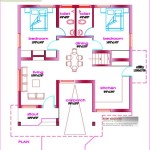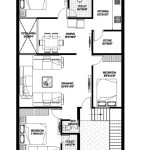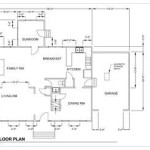```html
Do It Yourself Home Addition Plans: A Comprehensive Guide
Embarking on a do-it-yourself (DIY) home addition project can be a significant undertaking, demanding careful planning, meticulous execution, and a thorough understanding of building codes and construction principles. While the potential cost savings can be considerable, it's crucial to recognize the complexity involved and ensure one possesses the necessary skills and resources to complete the project safely and effectively. This article provides a comprehensive overview of the key considerations and planning steps involved in DIY home addition plans.
Key Point 1: Initial Assessment and Planning
The initial phase of any DIY home addition project centers on a thorough assessment of the existing property and the creation of a detailed plan. This includes evaluating the suitability of the site for the proposed addition, taking accurate measurements, and developing comprehensive architectural drawings. Failing to adequately plan at this stage can lead to costly errors and delays later in the project.
Site Evaluation: A critical first step involves evaluating the physical characteristics of the property. Considerations include soil type, drainage patterns, the presence of underground utilities, and any potential environmental constraints. A soil test is often recommended to determine the load-bearing capacity of the ground, which is essential for foundation design. Understanding the topography of the site is also important to ensure proper grading and drainage around the new addition.
Budgeting and Financing: Developing a realistic budget is crucial. Consider all aspects, including materials, tools, permits, potential contractor fees (for specialized tasks like electrical or plumbing), and a contingency fund for unexpected expenses. Explore financing options such as home equity loans or lines of credit. Diligently track expenses throughout the project to avoid overspending.
Design Considerations: The design of the addition should complement the existing structure and meet the specific needs of the homeowner. Consider factors such as the size and layout of the addition, its relationship to the existing rooms, and the overall aesthetic appeal. Invest time in researching different design options and creating detailed floor plans and elevations.
Permitting and Regulations: Research and comply with all local building codes and zoning regulations. This typically involves submitting detailed plans to the local building department for approval. Understanding the requirements for setbacks, height restrictions, and other zoning ordinances is essential to avoid delays or fines. Acquiring the necessary permits before commencing work is mandatory.
Key Point 2: Architectural Drawings and Structural Considerations
Detailed architectural drawings are the cornerstone of any successful DIY home addition. These drawings serve as a blueprint for the entire project and are essential for obtaining permits, ordering materials, and guiding the construction process. Furthermore, understanding basic structural principles is paramount to ensure the safety and stability of the addition.
Creating Architectural Drawings: High-quality architectural drawings should include floor plans, elevations, sections, and details. Floor plans illustrate the layout of the addition, including the location of walls, doors, windows, and fixtures. Elevations show the exterior appearance of the addition from different viewpoints. Sections provide a cutaway view of the structure, revealing the construction details of walls, floors, and roofs. Detailed drawings illustrate specific components, such as window and door installations, and foundation details.
Structural Design: The structural design should address the load-bearing requirements of the addition. This includes determining the size and spacing of joists, rafters, and columns to support the weight of the structure and any applicable snow or wind loads. If one lacks experience in structural engineering, consulting with a qualified structural engineer is strongly recommended. Improper structural design can lead to structural failure and pose a significant safety risk.
Foundation Design: The foundation is the critical base of the addition. The design should be appropriate for the soil conditions and the type of structure being built. Options include slab-on-grade foundations, crawl space foundations, and full basement foundations. Proper drainage around the foundation is essential to prevent water damage. Consider consulting with a geotechnical engineer to assess soil conditions and recommend the appropriate foundation design.
Material Selection: Choose building materials that are durable, weather-resistant, and aesthetically pleasing. Consider factors such as cost, availability, and ease of installation. Research different types of siding, roofing, and insulation to determine the best options for one's climate and budget. Select materials that are compatible with the existing structure to maintain a cohesive appearance.
Key Point 3: Construction Process and Safety
The construction phase requires physical labor, technical skills, and a commitment to safety. It is crucial to approach each task methodically and to follow established building practices. Prioritizing safety throughout the project is paramount to prevent accidents and injuries.
Foundation Construction: The foundation construction process typically involves excavation, forming, pouring concrete, and waterproofing. Ensure that the foundation is properly aligned and level. Allow sufficient time for the concrete to cure before proceeding with framing. Apply a waterproof coating to the exterior of the foundation walls to prevent moisture intrusion.
Framing: Framing involves constructing the skeletal structure of the addition using lumber or engineered wood products. This includes building walls, floors, and roofs. Ensure that the framing is plumb, level, and square. Follow the architectural drawings meticulously and use appropriate fasteners. Correctly securing the framing members is crucial for structural integrity.
Roofing: Roofing involves covering the roof structure with a weather-resistant material such as shingles, metal, or tile. Choose a roofing material that is appropriate for the climate and the architectural style of the house. Install underlayment to protect the roof deck from moisture. Properly flashing around chimneys, vents, and other roof penetrations is essential to prevent leaks.
Electrical and Plumbing: Electrical and plumbing work should be performed by qualified professionals unless one possesses the necessary licenses and experience. Improper electrical or plumbing installations can be hazardous and can violate building codes. Obtain the necessary permits for electrical and plumbing work and schedule inspections to ensure compliance.
Insulation and Ventilation: Proper insulation and ventilation are essential for energy efficiency and indoor air quality. Insulate walls, floors, and ceilings to reduce heat loss in the winter and heat gain in the summer. Install vapor barriers to prevent moisture from entering the wall cavities. Ensure that the addition is properly ventilated to prevent condensation and mold growth.
Finishing: Finishing involves completing the interior and exterior of the addition. This includes installing drywall, flooring, trim, and fixtures. Paint or stain the walls and trim to create the desired aesthetic. Landscaping around the addition can enhance its appearance and blend it with the existing surroundings.
Safety Precautions: Prioritize safety throughout the construction process. Wear appropriate personal protective equipment (PPE), such as safety glasses, gloves, and a hard hat. Use power tools safely and follow manufacturer's instructions. Be aware of potential hazards such as falls, electrical shocks, and cuts. Keep the work area clean and organized to prevent accidents. Never work alone, and always have a plan in case of an emergency.
Seeking Professional Assistance: While this article focuses on DIY approaches, recognizing the limitations of one's skills and seeking professional assistance when needed is paramount. Certain aspects of the project, such as structural engineering, electrical work, and plumbing, may require specialized expertise. Subcontracting these tasks to qualified professionals can ensure that the work is done correctly and safely.
```
Diy Addition How To Build A Room Your Home On Budget

Armchair Builder Resources Home Additions Built By Owner Do It Yourself And Save Big

Option Of Single Wide Mobile Home Floor Plans Homes

How To Save A Fortune Building Home Addition Simply Additions

4 Reasons To Consider A Room Addition Medford Design Build

Adding An Addition To A House What Know Rocket Mortgage

Home Design Your House

Home Design Your House

Floor Plans Models For Panel Built Homes Small House Tiny Cottage

How To Add A Bump Out Your House Forbes Home








